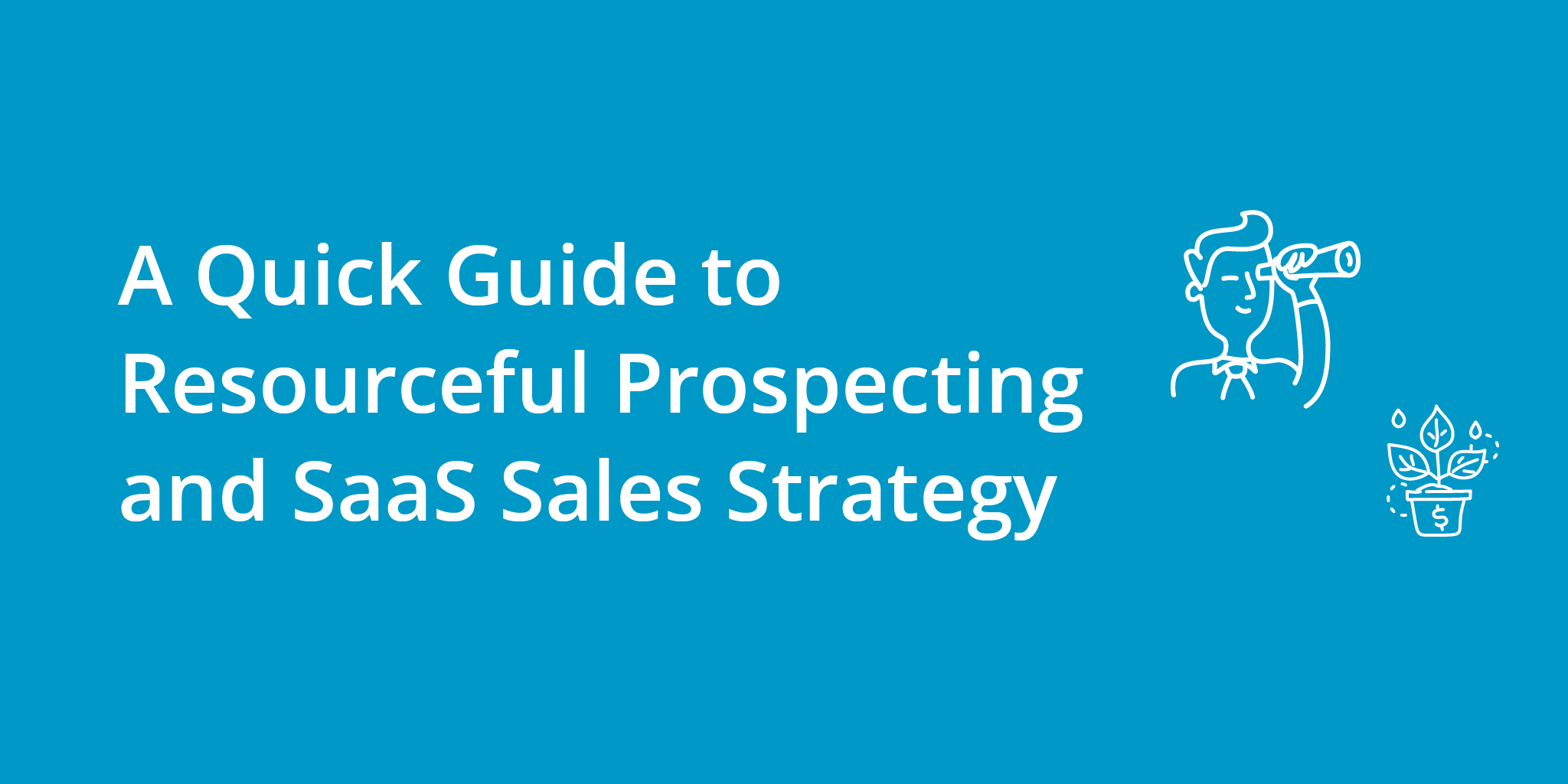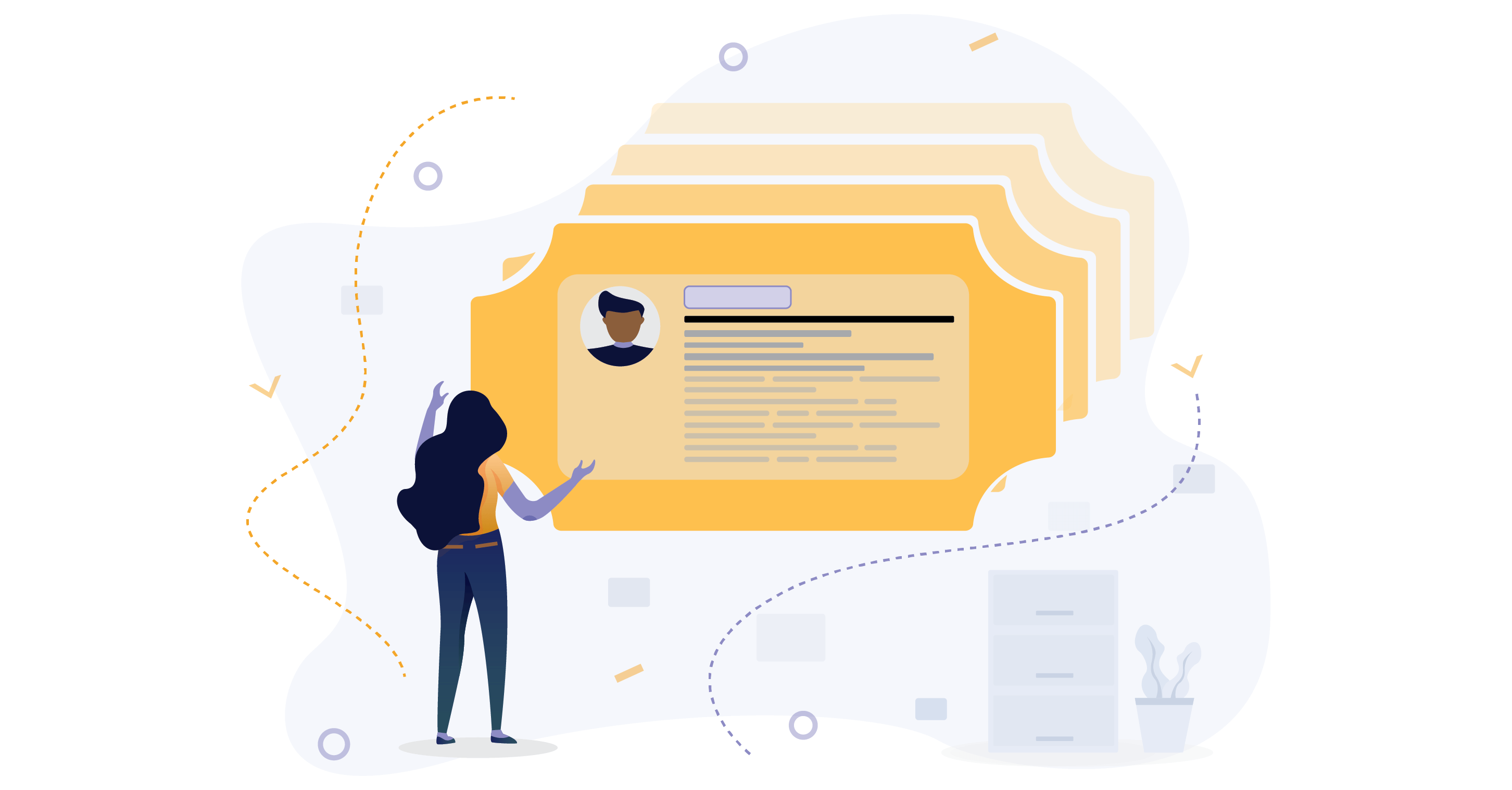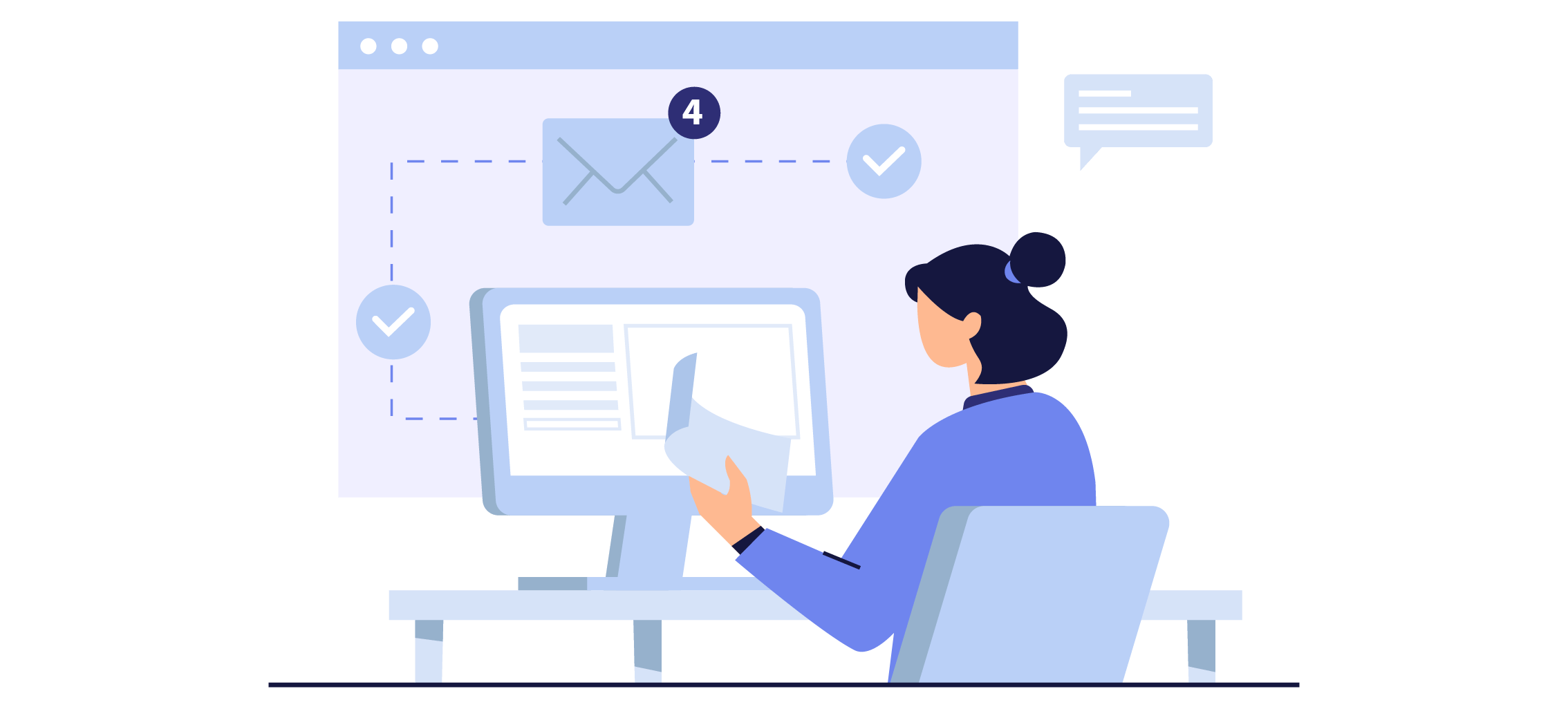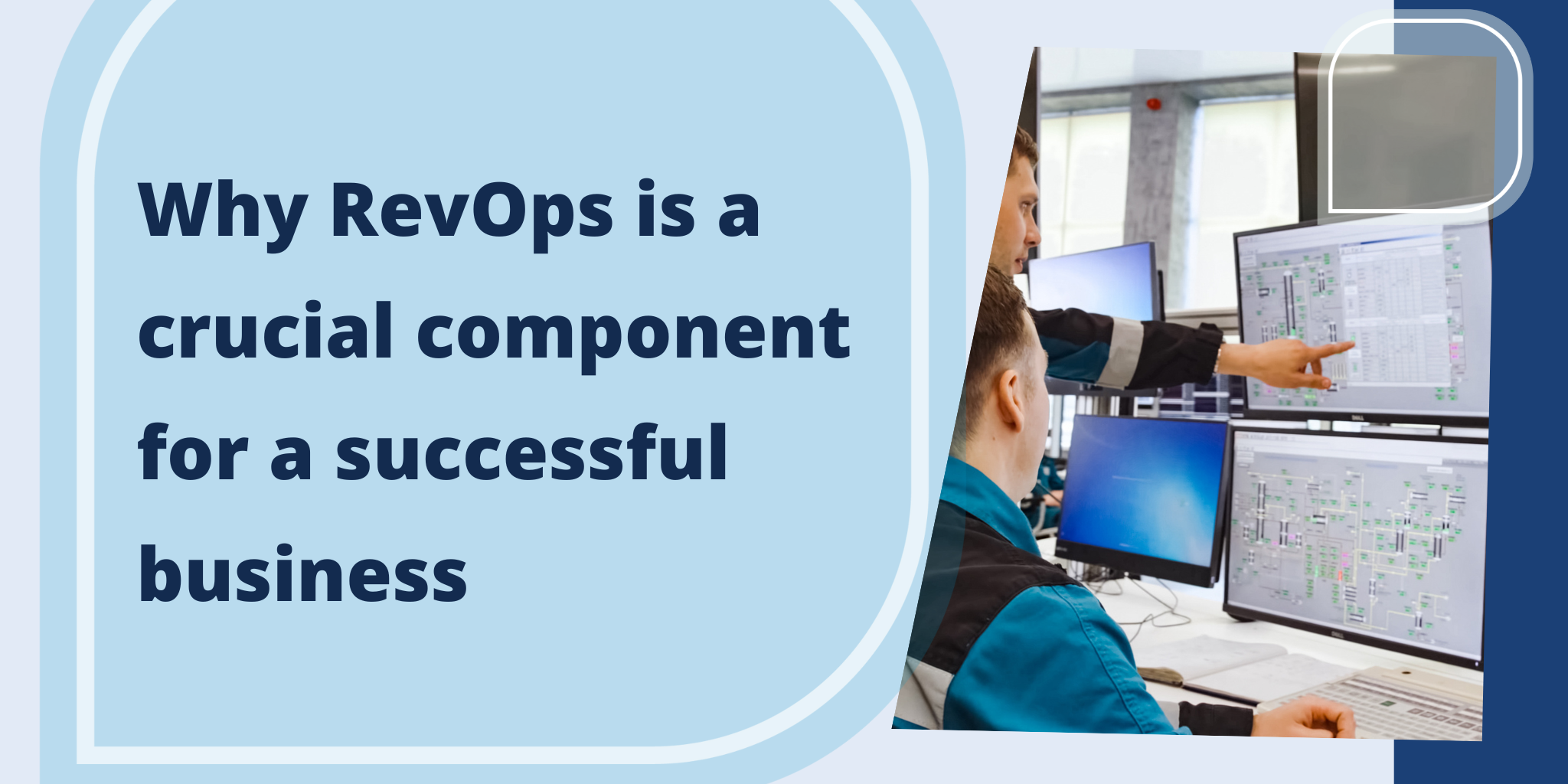
About 40% of salespeople say prospecting is the most challenging part of their job. Things are even harder for those in the software industry, especially when dealing with B2B SaaS buyers. These customers often have complex needs, and the sales process can take weeks or months.
Enterprise SaaS teams continue beyond prospecting and converting users. They must also retain those users and turn them into repeat buyers, which may require upselling or cross-selling. The more expensive or complex a product is, the longer the sales cycle.
Long sales cycles can make it difficult to predict revenue, creating uncertainty and cash flow problems. For example, you could spend weeks persuading prospects to sign up for a free trial, but there’s no guarantee they will buy.
One way to overcome these issues is to be more resourceful and scrappy. With this approach, you’ll get better results and save time, money, and energy. Let’s discuss the most common prospecting challenges for SaaS sales teams and how to overcome them.
Why SaaS Sales Teams Face Unique Challenges
SaaS companies face unique challenges when prospecting due to the nature of the product they sell.
For starters, SaaS products are often subscription-based and, therefore, require a long-term investment, which increases the cost for buyers. As a vendor, you must build lasting relationships with your clients to keep them subscribed and engaged.
Second, it’s crucial to find customers who are a good fit for the product so they become long-term subscribers. This process requires a thorough understanding of their needs and the ability to identify them early in the sales process.
The problem is that more than 70% of B2B buyers know what they need, and about half have already found a solution before engaging with sales reps. Therefore, they tend to contact vendors late in the sales process. To win their business, you must differentiate your product and devise solutions they haven’t considered.
Additionally, groups of people typically make SaaS buying decisions, not one individual. These groups consist of six to 10 decision-makers, and each member may have different opinions, needs, and goals.
The challenge for software vendors is to understand each buyer persona and present products in an engaging way. Moreover, you need to determine who to approach and what to say to get their attention.
However, there’s no one-size-fits-all solution to these issues because every SaaS company is unique, and every customer has distinct needs. But even so, some prospecting strategies work better than others and can be game-changers if implemented correctly.
Let’s see what those are and how to use them to drive more sales.

Define Your Ideal Customer Profile
An ideal customer profile (ICP) describes the company you’re targeting and provides a holistic view of the buyers most likely to benefit from what you sell.
On the other hand, an ideal buyer persona is a detailed representation of an individual (e.g., CEOs or other decision-makers) within the target company. It goes beyond basic demographic data and includes insights into the client’s job title, responsibilities, goals, challenges, motivations, and purchase behavior.
Enterprise SaaS teams target companies, not individuals or end users. Therefore, the first thing they need to do is define their ICPs based on specific criteria, such as:
- Industry
- Company size
- Annual revenue
- Target customers
- Tools and technologies used
- Geography (city, country, areas of operation)
- Number of employees
- Organizational maturity
- Competitive landscape
- Pain points
For example, selling SaaS to SMBs differs from enterprise sales, so you’ll have to adjust your approach accordingly.
Let’s say you’re targeting startups and small companies with fewer than 10 employees. In this case, you’ll focus on growth-related pain points and tailor your pitch to startup founders and other individuals within the organization.
But if you’re targeting enterprises, you’ll pitch to large groups of people and address complex problems like digital transformation or lead generation.
Reach Out to the Right People
Next, you’ll want to ensure you reach out to the right people.
If you sell accounting software to global enterprises, you’ll contact the CFO or other leaders rather than the head accountant. A regular accountant doesn’t have decision-making power in a large organization.
With that in mind, try to identify who the key decision-makers are. Then, browse the company’s website, LinkedIn profile, or financial records to see who’s in charge of what. Also, check out this guide on how to find anyone’s business email address and then plan your approach.
For best results, establish some common ground with the people you contact. For example, see if you have any mutual friends on Facebook, LinkedIn, or other platforms, join the groups they’re in, and comment on their posts.
Remember that no one likes spam. If you contact someone out of the blue, they’ll most likely ignore your message. Your best bet is to take the time to warm up cold leads and build trust before you deliver your pitch.
Take a Proactive Approach
As discussed earlier, B2B buyers have well-defined needs and look for specific SaaS products and service features. However, they may need to be more familiar with your product and how it compares to those they’re considering. Plus, they might have the time to research your offering—even if they’ve only just seen or heard about it.
Given these aspects, it makes sense to take a proactive approach and lay the groundwork for potential clients.
For example, you could offer a free demo to show how your product would benefit their business. You may also send them white papers, case studies, comparison charts, and other relevant resources. Highlight your unique value proposition, focusing on those features that align with the customer’s needs.
This sales prospecting strategy guide also suggests using intent data to customize your outreach. Buyer intent data consists of behavioral signals indicating a person’s interest in a particular product or service.
Think about online platforms like G2, Capterra, or TrustRadius, which feature product reviews, ratings, and questions from buyers.
As a salesperson, you can leverage this data to identify prospects actively searching for a product like yours. Plus, you can determine where prospects are in their buying journey and how to pique their interest.
Be Prepared to Handle Objections
No matter how good your pitch is, most buyers will raise objections at some point in the sales process. Let’s see a few examples:
- We’re still determining if your product has the features we need.
- An in-house solution would be more affordable.
- Give us time to think, and we’ll get back to you.
- We need to learn more about your brand or products.
- We’re on a tight budget and would prefer a more affordable solution.
Successful salespeople don’t back down when dealing with objections. Instead, they see them as an opportunity to address customers' concerns and build trust.
Let’s say a potential client raises a concern about money. First, let them speak, then try to determine the real reason behind their objection.
Meanwhile, think about possible solutions, such as:
- Offer a discount or freebies
- Remove the extras to lower the price (e.g., you could ask, “Are there any features you don’t want or need?")
- Explain how your product can boost work efficiency or cut costs in the long run
Another option is to follow up with open-ended questions:
- Is it a budget issue or a cash flow issue?
- Too expensive compared to what?
- If money wasn’t a problem, would you use our products?
- What ROI are you aiming for?
With this approach, you’ll have a chance to dig deeper into the customer’s needs and find an option that works for both parties. Plus, you’ll keep the conversation flowing and leave room for further discussion.
Again, what matters most is being proactive. Consider your prospects' objections and arm yourself with the right information to address their concerns.

Focus on the Customer
As an entrepreneur or salesperson, you know your products inside and out. That’s great, but how much do you know about your customers' needs and pain points?
Potential clients couldn’t care less about your product. How the product would improve their bottom line or solve a problem matters to them.
According to Forrester, nearly 70% of B2B buyers prefer to engage with salespeople who understand their needs. Moreover, they expect sales reps to act in a consultative manner instead of applying pressure to close the deal.
While it’s important to highlight your unique value proposition, you should first discuss the customer’s needs. Doing so can tailor your messaging to address those needs and position your product as a solution.
Additionally, customers are more likely to buy from someone they trust. If your sole purpose is to sell, you’ll lose their business.
Johnny Costello, the Head of Marketing at Sendible, recommends supporting your customers every step of the way, even if that means “giving them free time on your software,” he told SaaStock.
On a similar note, Landbot’s co-founder Cris Villar says salespeople should “go back to basics” and redefine their target audience. But, at the same time, they should support existing customers and lend a helping hand when they need it most.
Leverage Free Trials to Get More Prospects
One way to support new customers and attract leads is to offer free trials. Most SaaS products nowadays include this option, and it makes perfect sense. Free trials have a conversion rate of 2.2% to 48.8%, depending on their type and where the traffic comes from.
However, getting prospects to sign up for a free trial is just one piece of the puzzle. The challenge lies in converting them into paying customers.
Freemium trials, which provide access to software products indefinitely, are more likely to attract subscribers but have low conversion rates.
By comparison, time-limited trials create a sense of urgency, encouraging users to test the product before a given deadline. If that product meets their expectations, they won’t mind paying for it.
In one study, B2B companies offering a 14-day free trial saw a 66% conversion rate. Some free trials include discounts or one-time offers, which can further increase conversions.
Convert Free Trial Users into Paying Customers
Some prospects sign up for free trials or product demos out of curiosity. They don’t necessarily intend to buy, but that’s where you come in. As a sales professional, it’s your job to convert those users into paying customers.
First, decide what features you want to offer during the trial period.
For example, you could lock premium features or allow users to try them out just once so they have a reason to sign up for a paid subscription.
Next, check out the actions performed by users. Use this information to create personalized experiences around the (premium) features they want most. Highlight their value and include additional information, such as videos and case studies.
Most importantly, guide users every step of the way for a smooth onboarding experience. Consider offering video tutorials, free consultations, live workshops, or in-app guided tours. The whole point is to provide immediate value and remove any unnecessary friction.
Go one step further and offer personalized demos. This strategy would allow you to understand customers' pain points better and show them how your product could help.
Meanwhile, create an email sequence and include calls to action in your communications. Identify the most qualified leads and provide them with on-demand demos, exclusive deals, or a gamified trial extension.
An even better approach is to personalize your free trials for different users.
For example, a company selling financial software could offer a free trial for prospects interested in billing and invoicing, one for those interested in asset tracking, and one focused on credit management solutions.

Refine Your Prospecting to Build a Strong Sales Pipeline
Sales prospecting requires ongoing effort and a willingness to adapt to changing circumstances. Sometimes, you have to be resourceful and think outside the box to get results, especially when working with tight budgets.
Enterprise SaaS poses unique challenges to salespeople because of its complexity. Be prepared to spend weeks or months conducting product demos, persuading decision-makers, negotiating prices, and nurturing your leads. The ability to handle objections is just as important.
All in all, SaaS sales involve a steep learning curve, even for experienced professionals. The key to success is to thoroughly understand your target market, tailor your message to each prospect, and provide value at each stage of the buyer’s journey.
About the Author: Andra Picincu is a digital marketing consultant and copywriter with over 14 years of experience. She works closely with small businesses and large organizations to help them grow and increase brand awareness. Over the past decade, she has turned her passion for marketing and writing into a successful business with a global audience. Visit her LinkedIn profile to find out more!
You might also be interested in...

Read More
What is Revenue Operations?





